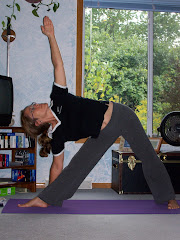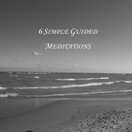
I used to think meditation was listening and prayer was talking to some higher force. As a child, prayer was a part of my evening ritual; I had even made up a bedtime prayer to use along with the Lord's Prayer. This "home made" one had more meaning to me as the church's version of the Lord's Prayer was not very relatable for a 7 year old.
As time passed, I came to realize that the prayers felt completely empty and void of any meaning. I could recite them backwards, forwards, and sideways while not actually paying any attention to the words. By high school, the ritual had become worthless; so I stopped.
Almost 20 years later, I became interested in meditation. After struggling all day to control everything around me, this practice of letting go was just what I needed. Prayer felt like one more attempt at controlling and meditation was being quiet and allowing things to be.
Now after a relatively consistent meditation practice for 5-10 years, I'm ready to check out this prayer-thing once again.
Just as there are many definitions or viewpoint of what meditation is, there are different mindsets regarding prayer. Gary Kraftsow lists prayer as one of the important elements of yoga. When I asked him how prayer was differed from meditation, he said, "It's a subset of meditation."
After doing a little research, I'm beginning to see what he meant.
In his book, Awakening the Buddha Within, Lama Surya Das describes prayer as "sacred speech." "In non-theistic Buddhism, as we pray, we are not petitioning for something so much as we are reaffirming our intentions and asserting our vows," (page 183).
One of the most useful ideas was uncovered in The Energy of Prayer by Thich Nhat Hanh. He points out that "in prayer there has to be mindfulness, concentration, insight, loving kindness, and compassion," (page 40). This points to the uselessness of "worry prayers." You know when you bargain with the divine while in a state of panic to have things go a certain way. Thich goes on to suggest the two most important elements in "effective prayer." "The first is to establish a relationship between ourselves and the one we are praying to. It is the equivalent of connecting the electrical wire when we want to communicate by telephone.... When we meditate on [the connection between ourself and the one we are praying for], communication is realized.... The second element we need for prayer is energy. We have connected the telephone wire, now we need to send an electric current through it. In prayer, the electric current is love, mindfulness, and right concentration," (page 41-43).
Finally, I would be remiss to talk about prayer without mentioning Dr. Larry Dossey. His books, Healing Words and Prayer is Good Medicine, can be used as a foundation to understanding and inspiring a regular practice of prayer.
I pray you are well and filled with love, compassion, and peace.



2 comments:
So...out of curiosity, who *do* you address when praying?
I think this is my stumbling point. I have such a strong sense of divine energy permeating everything I come in contact with that it just doesn't make sense for me to personify it into a deity. This is why I have an issue with talkin' to the anthropomorphized Guy in the Sky.
What I do love are Buddhist prayers; Metta, or Lovingkindness prayers. My favorite version is Paul Norton's from the Milwaukee Mindfulness Center:
May I be filled with lovingkindness.
May I be well.
May I be peaceful and at ease.
May I be happy.
Then you do it for someone you love, someone you're neutral toward, a teacher or mentor, and a difficult person - someone who's hurt you tremendously in your life.
Ironically, the difficult person was not as hard as doing the very first prayer of lovingkindness toward myself. Isn't that interesting? I have such a difficult time being compassionate to myself. But I do love the "peaceful and at ease" part. It's so specific. That is the ultimate goal!
Hey Darcy,
The "who" is very individual. For some it's connecting to "the guy in the sky", Jesus, Buddha, Mother Earth, Universal Energy, etc. For you, it just may be pausing to reflect on the energy all around you that permeates within and beyond your physical body--that's the idea: Becoming aware of the divine or "God-like" source that connects you with everything and everyone. When you really get that, the first part of the Metta (torwards the self) will become much easier. As you said "divine energy permeates everything"; that includes YOU!
Another way to address the "who" part is to consider when praying for another person. For example in last Friday's meditation class (in Menomonee Falls), we directed our prayers to certain people. Since we are all connected, when we bring awareness to that divine nature within and beyond us, we're bringing attention to the divine nature within the "other" person as well--since it's all the same source. This points to what physics tells us regarding non-localization (a longer subject, but directly related).
Hope this helps.
Love much,
Kris K
Post a Comment